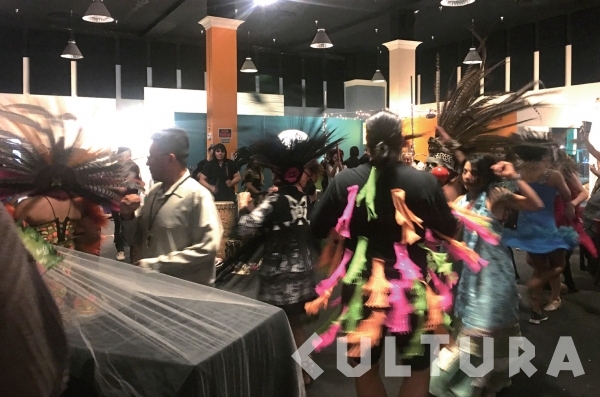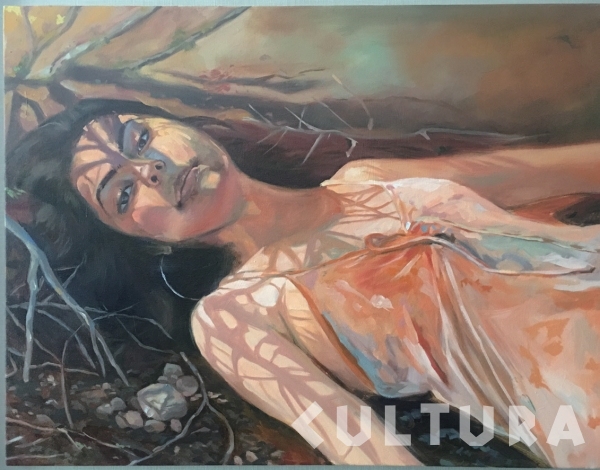
I recently got a phone call from my Japanese friend Mr. Ishi, an art critic living in Los Angeles. He told me to pay a visit to an art fair called First Friday Long Beach. He also informed me of a Korean painter who was the only Korean invited at the Fair and that critics
were showing interests in her works.
Long Beach is a beach city on the Pacific Coast, located at about 35km South of Los Angeles, and its population of a half million makes it the 2nd largest city in Los Angeles Metropolitan area of Southern California. Thanks to the Spanish of earlier days who settled on this town, there are still beautiful oldstyle residences and small cafes along the sea side streets.
As Mr. Ishi said, The First Friday Long Beach Art Fair is co-operated by the City of Long Beach and Bixby Knolls Business Improvement Association. The Fair has grown up for the last 10 years, and over 50 companies have been participating as supporters and offering exhibition space to artists and even musicians.
For this reason, many artists are eager to be invited to this Fair, but the rules are known to be quite strict. All applications should pass in the judging committee. With this kind of selection process, the Fair can offer more spacious showrooms to each artist and attract more interests from visitors. At this Fair, artists can exhibit their works, talk with buyers directly, discussing today's trends, and have a direct deal with them.
Around 1960, as if in the New Era, many artists from East coast and abroad moved into Los Angeles area seeking new freedom. They wanted to forget the old styles of the past and tried new styles that never existed before. Long Beach had a reputation for loving new cultures. Many artists who were indulged in Avant-Grade came to the Long Beach area and the poetry readings by poets were also very popular. Such new culture brought so many followers, for this area was just right for them.
Newspapers of those days even described such new comers to the Los Angeles area as "Rebels In Paradise." Abstract paintings by Jackson Pollock, Alan Davie, Mark Rothko and other pop artists began to be highly valued at that time.
When I got to the Fair, there were already many visitors filling the streets from Bixby to San Antonio Street. I could feel the festive atmosphere with mixed sounds of viewers and street performers. As I entered the Main Display Hall of Expo Art Center, I was a little surprised at its size, which was almost two times a tennis court. There was the general curator still busy preparing the exhibition.
After telling me the history of the Fair, he explained that the purpose of this Fair was to get the artists to have a business mindset through the exhibition. At my question on the characteristics of Asia- American artists’ works compared with those of American artists, he pointed out that "People often try to find the differences between European and Oriental art. All artists, however, are mutually inspired. For example, Japanese like and produce a lot of Anime, but all Anime is not made by Japanese only. Therefore, it would be unnecessary to define the differences and call them Asian-America particularities."
I could accept his balanced comments and emphasis on artists’ free spirits. After our short meeting, he pointed at a display booth in the middle of the hall. That was the booth of the only Korean painter at this Fair. There I met June Jung and she was still to complete displaying her works. What caught my eyes first were ‘Backside view lady’ and the 12 Oriental Zodiac.
On ‘Backside View lady,’ she used strong and clear color tones with delicate touches of hair and lines. It seemed that the painter was trying to hide the lady’s emotion between colors, but she looked like telling something more of heavy subjects.
The paintings on the theme of ‘Oriental Zodiac’ were showing different meanings from what traditional oriental symbolism conveyed. The pigs with a crown, Kim Jeong-eun and pigs, and boars sitting peacefully in the grass, etc., were enough to show Jung’s diverse perspectives and attempts. Overall, her painting was a harmony of a fairly modern and an orthodox brushwork covering the whole.
Jung and I finally were able to take time to talk:
Jun What made you decide to participate in this Fair as the only Korean?
Jung I hadn’t known that I was the only Korean until I attended. A librarian at the Lyman Art museum contacted my through the Instagram, and I was asked if I was willing to participate in this event. So I applied to this event and was formally selected to participate. My booths are fully funded by the state government.
Jun When did you find your talent and interests in art?
Jung As a kid, I always enjoyed drawing and scribbling. I think I formally started learning how to draw as I entered middle school (Sunhwa Arts School). There is no such moment when I realized my talent.
Jun What are your main objects and the reasons for it?
Jung I have had to hone more skills and colors taste, and earn basic knowledge on each genre of oil
paintings. In order to express my voice and build up my personalized style, I practiced many objects such as landscapes, portraits and others.
Since 2017, I have been more absorbed in portraits and people’s backside. Normally, portraits show the frontal looks with facial expressions. However, we only get to see the backside of a person when someone passes by, and we can still catch his or her emotions and moods. I like drawing implied stories.
I am planning to exhibit more portraits for my personal gallery exhibition next year. The paintings I
am currently working on will deliver a supernatural mood that shows many different facial expressions of different moment at the same time. I like to have it contain time elements.
Jun Can you tell me the painters and paintings that influenced your work?
Jung I study David Hockney and Jenny Seville most often. Many contemporary artists that are introduced at the Mesa Arts Center in Phoenix also give me inspirations.
Jun Who is your favorite painter in Korea?
Jung It is my teacher Sangik Suh from middle school. He always impressed me with well positioned figures and background and with strong colors. Maybe be first known as a talented artist before getting the attention as a Korean-American artist.

Our conversation ended there for the visitors waiting for her. Meeting a new artist always fills me with excitement and pleasure at the thought of learning a new world and looking into it. It is a valuable opportunity to understand the artist’s emotions laid deep inside and the profound world of their artwork. Most artists are not concerned much about people's evaluation of their artwork. When they start making something, they only pour out their passion and efforts into it. They would consider the moments when they are absorbed in work truly beautiful. I believe this is what all artists should aim in the end.
Maybe we are not trying to realize and study how the power of art will work and function in our practical life. We seem to be more interested in outer elements such as styles, attractive sounds, colors than what the artist intended to express. Art sometimes cross between the ideal and the reality, and is divided or combined. Someone once said that art was married to the reality. We are trying to understand the unknown territory that we have not reached yet through that marriage. I think it is the artist's innate and instinctive ability. Tonight, I got to know a new-face painter Jung. She was coming to the shore as a tiny wave, but no doubt that she will make a big wave in the near future with her talented skills, hard work and pure soul.
I remember that Mr. Ishi recently said, "Young people in Korea are strong and brave. I am so impressed by their spirit of challenge to art. Even when they are faced with obstacles, they are able to exert their own originality and eventually develop it into their own. Japan accepted western culture 100 years earlier than Korea, but it has not broken away from stereotyped frames. While the young generation of Japan was indulged in Anime, Japanese pure art has remained on the same place.”
The night breeze on the Pacific coast is blowing gentle, and I see there is a light shining bright over the dark sea of images.
* 《쿨투라》 2018년 11월호(통권 53호) *


